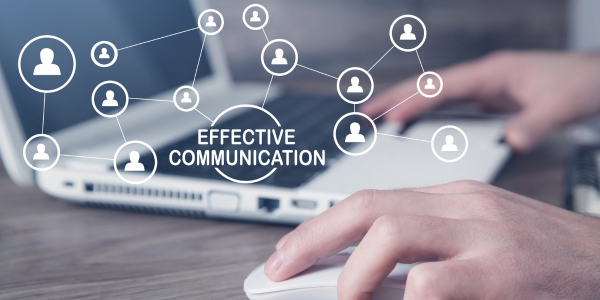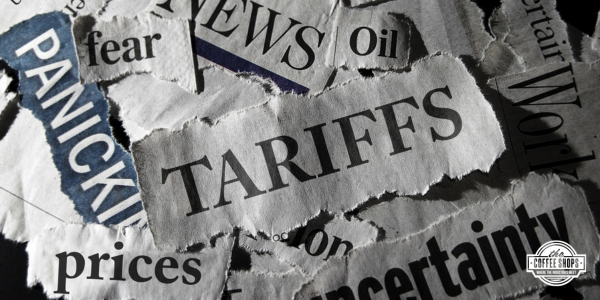The Power of Communication

By Monica Vornbrock.
How effective communication impacts your success.
Remember that person at the water cooler that just wouldn’t stop talking to coworkers and wasting precious time with useless conversations about the weather? Well, that is not what we mean when talking about communication. Yes, effective team communication does involve a certain level of cordiality and some comradery, but real, effective communication goes beyond just being friendly to your co-workers. It is about being able to connect professionally with others, regardless of how you personally feel about them and with the understanding that you are all driven by a common goal. Whether it is achieving your departmental goals or overall organizational goals; effective team communication is paramount to the success of your organization.
According to the Carnegie Institute for Science, 85% of your business financial success is due to a team’s personality and ability to communicate, negotiate and lead. Only 15% is due to technical knowledge.
To improve communication within your organization, there are a few elements that need to exist within your teams:
- Mutual trust and respect.
- Modifying your communication style to better harmonize with your coworkers’ communication styles.
- Understanding the value everyone contributes to the team and how that impacts collaboration and the ability to meet goals.
- Allowing room for accountability and constructive criticism.
Mutual trust and respect
We spend a lot more time with our co-workers than even our own families, so the basics of family relationships apply to work too. Respecting your differences and trusting that each member of the team is capable to complete and handle their own responsibilities, this will help develop more empathy toward one another. Asking questions instead of making assumptions helps foster trust and a feeling of safety within the team.
Modifying your communication style to better harmonize with your coworkers’ communication styles
We all have a unique communication style, some team members need a lot of details in order to feel sure about their work and for completing tasks, others, just need two words and hit the ground running. Some people rush to complete a task to cross things off their list quickly, while others place things on a queue and complete things based on their own priority list. Learning how your teams convey and receive information, will help you identify how to communicate expectations, will streamline your projects, and ultimately improve their success rates.
All these differences in the way people communicate make each employee fascinating and amazing individual, celebrating that uniqueness, along with allowing space for everyone to embrace their own communication styles builds a safe work environment, where every person feels encouraged to share ideas and feedback openly, without fear of being judged or outcasted.
Understanding the value everyone contributes to the team and how that impacts collaboration and the ability to meet goals
You were hired because you are good at what you do, and so was every person on your team. Sometimes we get so caught up in what our priorities and assignments are, that we forget to step back and see how it affects the bigger picture, same goes with everyone else, taking time to say thank you and sharing your wins and learning moments with your team, goes a long way in painting a clear picture of how every single action performed daily, affects the overall organizational goals for the year, and even further out.
Allowing room for accountability and constructive criticism
Here is where self-accountability and a growth mindset, play a big role. Recognizing how to give feedback in a way in which it is not focused on the person receiving the feedback, but on the task or issue itself; and being able to receive feedback with an open mind and a willingness to improve conveys a message to your team that there is a learning opportunity from any mistakes made and creates a safe environment for all to feel empowered to act, and to speak their mind.
According to Gallup’s State of the Global Workplace: 2023 Report, disengaged employees cost the world an unbelievable $8.8 trillion in lost productivity and the majority of the world’s employees are “quiet quitting.”

Ineffective team communication leads to low morale and a toxic work environment. Recognizing and rectifying potential roadblocks, avoiding making assumptions and being aware of and addressing generational and cultural bias can help avoid lower productivity, disengagement, and poor employee retention in your organization.
If you see the value that improved team communication can bring to your organization, and would like to boost your employee morale, engagement and productivity, there are many of resources available, and partners that can assist your organization in creating a more engaged and productive team.
Learn more about The GLO Group in their Coffee Shop Directory, get your FREE 15 minute consultation or visit www.glogroup.com.
Recommended For You

Navigating the impact of tariffs on the roofing industry: Lessons from the past and preparing for the future
Read More ...
8 common sources of commercial roof damage
Read More ...
A guide to choosing the perfect metal roof color
Read More ...


















Comments
Leave a Reply
Have an account? Login to leave a comment!
Sign In